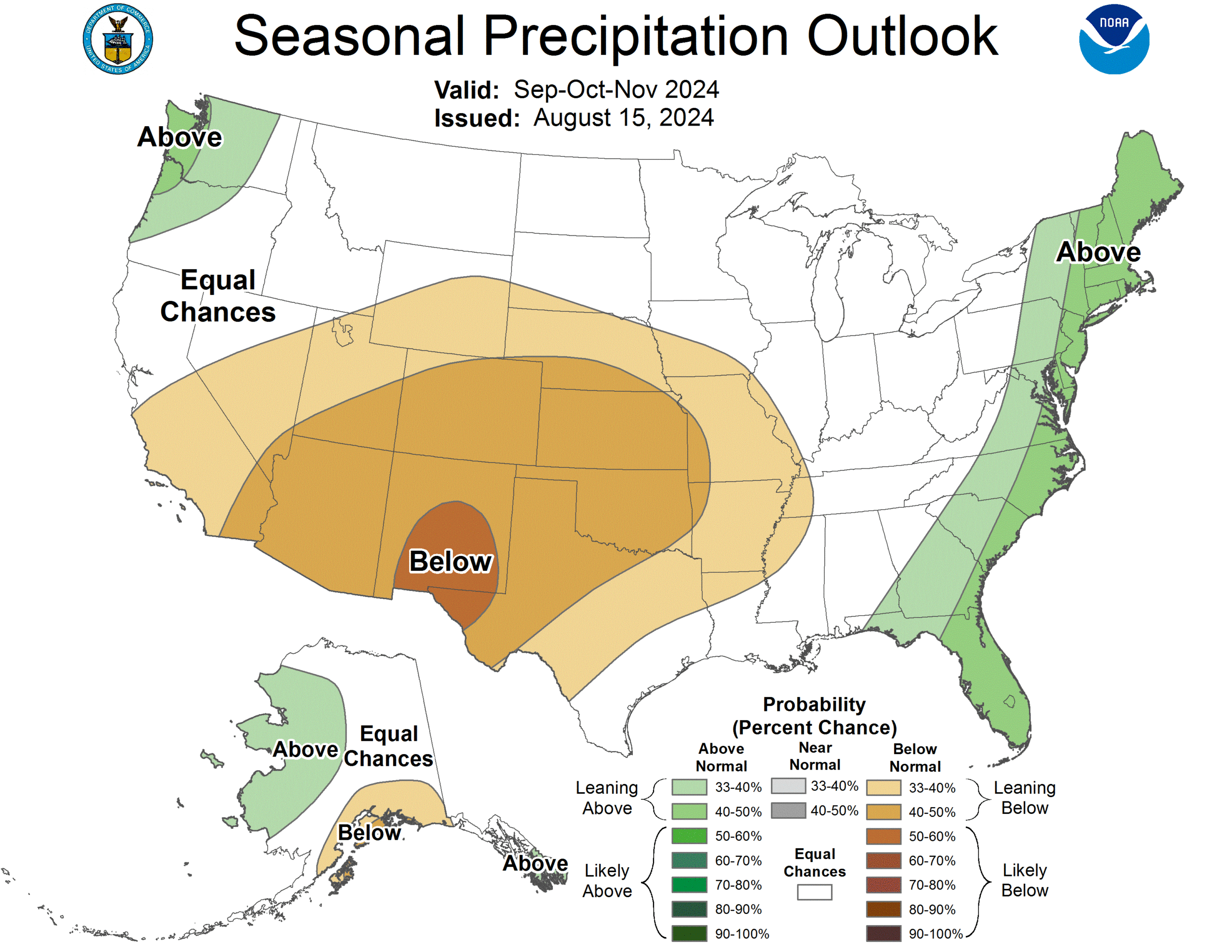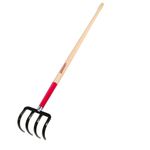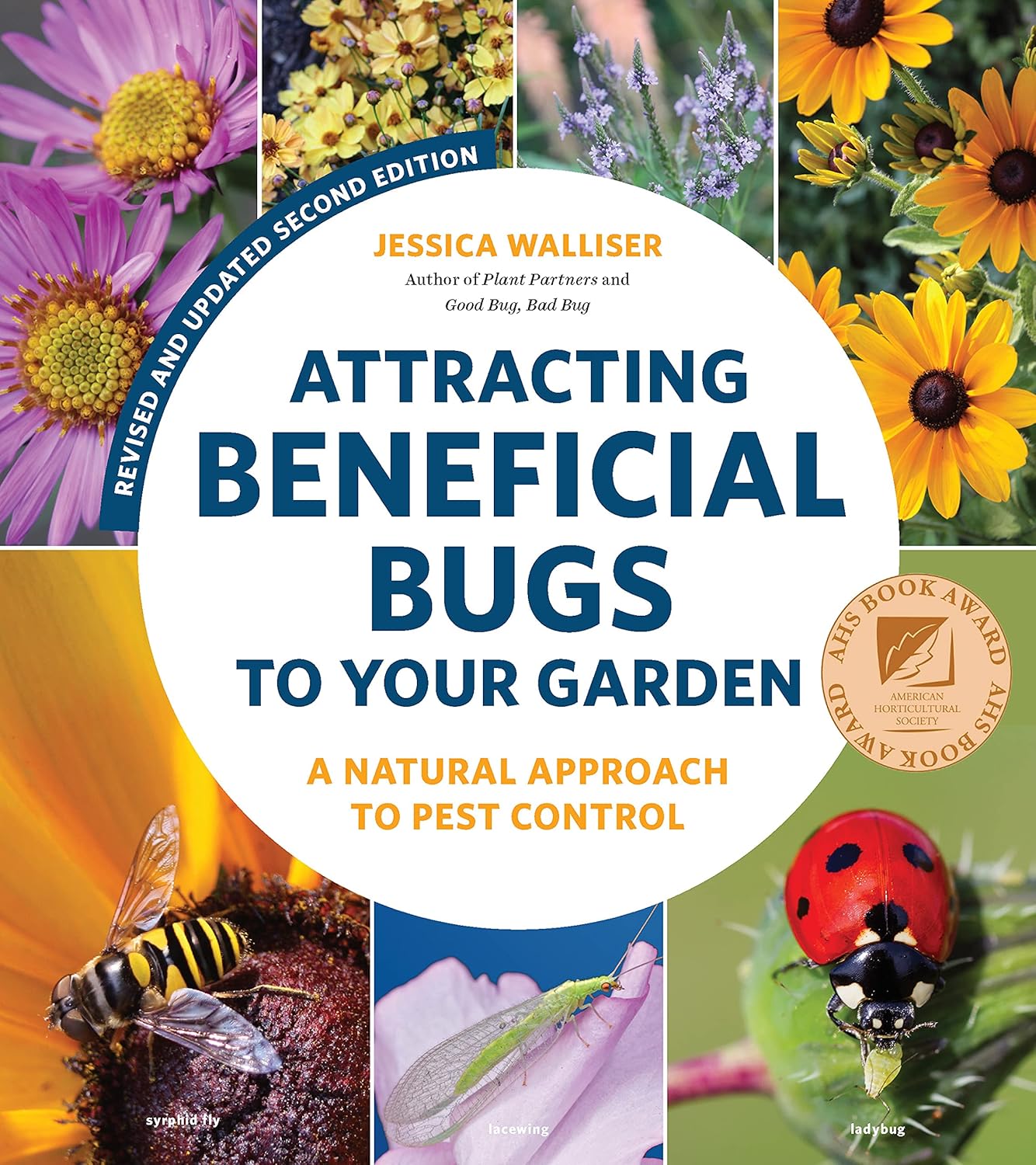
On a recent hike in the foothills just southeast of my house, I couldn’t help but notice crisped, curling leaves on big flower cinquefoil (Drymocallis fissa) and the drought-tolerant mountain mahogany (Cercocarpus montanus), which took me back to the drought of 2001/2002, widely considered the benchmark drought for my area. Though I was a kid, I vividly remember the sense of collective worry and ensuing water restrictions, browning lawns and gardens, and tinder-filled natural spaces. The lack of water is sure to stress out plants, but there are several ways that you can get your garden through a drought without wasting water unnecessarily.
Are we in a drought currently? A quick look at the free-to-access United States Drought Monitor, indicates my region is currently in “severe drought.” We’ve been flirting with “extreme drought” for a few weeks now, only avoiding the rating thanks to some monsoonal moisture that arrived in early August. While the added moisture was sufficient to spare us the designation of “extreme,” it hasn’t been enough to bring us out of drought. It’s likely that some degree of dry period will continue too, based off the three-month forecasts I’m seeing on the National Oceanic and Atmospheric Association’s website. Broadly speaking, this story holds true for much of the Mountain West, with mentionable to severe droughts present in most of the states in our region at time of writing.

Regardless of precipitation amounts and soil moisture levels, gardens go on. The above resources certainly help us make data-informed choices in managing our gardens. (Is this a good fall to plant a tree? Probably not.) But there are some tips and tricks I’ve learned over the years that have made a difference in my practice as I continue to garden in dry times. These ideas can be applied with little cost, as they are primarily changes to your existing gardening routines.

1. Set up irrigation for plants with high water needs
Perhaps most important, irrigate efficiently. This goes for both how you apply water as well as when you apply water. In spaces with higher water needs, like vegetable gardens and plantings that are not yet established, irrigate more frequently with the most efficient method possible. In the majority of cases, that will be drip, which routinely delivers 80 to 90% of water to the root zone. If you don’t own drip supplies, a soaker hose does the job for little cost and is more mobile.
2. Water deeply rather than frequently
In more adaptable and established plantings, like my lush but deep-rooted meadow, I irrigate every one to four weeks—only enough to keep the garden healthy and blooming reasonably well. In doing so I irrigate for a long time, aiming to soak water into my soil profile as deeply as I can manage. In some cases, I water until pooling begins on the soil surface in a given location, move the hose to do another, and then return the sprinkler to its first location to really soak it deeply. I then wait as long as is reasonably possible before irrigating again.
Frequent watering results in wetting and drying cycles of the soil’s surface. In response, roots concentrate near the surface, aiming to quickly soak up that water before it evaporates or is soaked up by other plants. Such roots are more susceptible to death with extreme temperature and moisture fluctuations. Less frequent, deeper watering encourages roots to plunge and seek water that is still available but not being used from below in the better-insulated depths of the soil profile. With time, this will increase the drought resistance of most plantings, because water loss is slower from deep in the soil profile than at its surface. This also reduces my labor, since I spend fewer days watering; so far, I’ve only watered my meadow about six times this growing season despite my area being in drought.
Plan to water on cloudy, cool days, in the morning/evening, or overnight. Since sun and wind are the main drivers of evaporation, irrigating at times when sunlight is weak and wind is minimal significantly reduces how much water we waste. This allows us to get more water in the ground and to do so more quickly. Drip systems can easily be scheduled to run overnight, while those of us that put out sprinklers and soaker hoses can typically do so in the evening or the morning.
3. Set new plants up for success by giving them plenty of moisture
Regardless of how dry it may be, many of us still have the occasional plant die or nagging bare spot that seems to grow a crop of weeds each year. In such places, adding a few plants can make a real difference to reduce weeding next season. Obviously, adding plants to a drought-stricken soil can be a challenge. One tactic I learned while working at Denver Botanic Gardens was simply to dig my planting hole and fill it twice with water while soaking my transplant in a bucket of water. This way, my hydrated plant goes into a prehydrated planting hole rather than into dry soil, which can wick moisture away from the plant. It also helps water to penetrate more deeply next time I irrigate. This strategy is simple, effective, and greatly underused in our region. If time and hose access allow, I’ll irrigate the entire area the day before even digging the planting hole, as it does the same on a larger scale and makes digging much easier, though I will still follow with the dig-soak-plant method. It’s worth noting that I still irrigate the transplant after planting.

4. Covering soil is important for moisture retention
Finally, cover your soil. A soil covering can quickly make a difference in soil moisture losses as well as soil temperatures, which in turn influences the rate at which plants themselves use water. Organic soil coverings like leaf mulch, wood mulch, plant debris, and living plants all contribute to soil organic matter too, which helps to act like a sponge, holding on to moisture in a soil and making it available gradually.
Most soil coverings can be acquired for free or cheap; my meadow, for example, generates its own mulch, which is a combination of last year’s lawnmower-mulched meadow debris and a mix of living ground cover and understory species I’ve selected for the job.
In other parts of my yard, I use leaves from last fall (be sure to mulch those with a lawnmower too, or they will become your neighbor’s mulch) or even living mulches of quick-growing annual crops, like those discussed in the previous piece Annuals for Cut Flowers in the Mountain West. Such living mulches can be acquired as seed packets for just a few dollars, allowed to grow to full height, flower, and seed (letting them self-perpetuate), or can be cut back periodically and spread across the soil surface.
Wood mulch is available for free from most municipalities also and performs a similar role. And, while gravel mulches work as well or better for our region, they do cost more up front. Both of those options are discussed in a piece on How to Pick the Best Mulch for the Mountain West.
Drought is no stranger to the Interior West and isn’t all loss, either. It gains us free time, thanks to suppressed weed pressure, especially annual weed pressure. It also provides a different selection pressure for some species to shine by throttling back some of the fast-growing resource hogs in both garden and natural systems. Knowing how to gracefully cope with drought by using improved watering and transplant practices, and appropriately using soil coverings, we can better insulate our plants from dry periods and enjoy the garden!
See more Mountain West regional reports here.
To discuss these plants or ask other gardening questions, chat with the author on the Gardening Answers forum.
Learn more:
How to Save Water in the Garden for Droughts to Come
The Best Plants for Areas with Extreme Heat
Summer Native Plants for the Mountain West
Bryan Fischer lives and gardens at the intersection of the Great Plains and the Rockies. He is a horticulturist and the curator of plant collections for a local botanic garden.
All photos unless otherwise noted: Bryan Fischer
Fine Gardening Recommended Products

isYoung Birdlook® Smart Bird Feeder with Camera
Fine Gardening receives a commission for items purchased through links on this site, including Amazon Associates and other affiliate advertising programs.

Razor-Back Potato/Refuse Hook
Fine Gardening receives a commission for items purchased through links on this site, including Amazon Associates and other affiliate advertising programs.

Attracting Beneficial Bugs to Your Garden, Revised and Updated Second Edition: A Natural Approach to Pest Control
Fine Gardening receives a commission for items purchased through links on this site, including Amazon Associates and other affiliate advertising programs.



















Comments
Log in or create an account to post a comment.
Sign up Log in